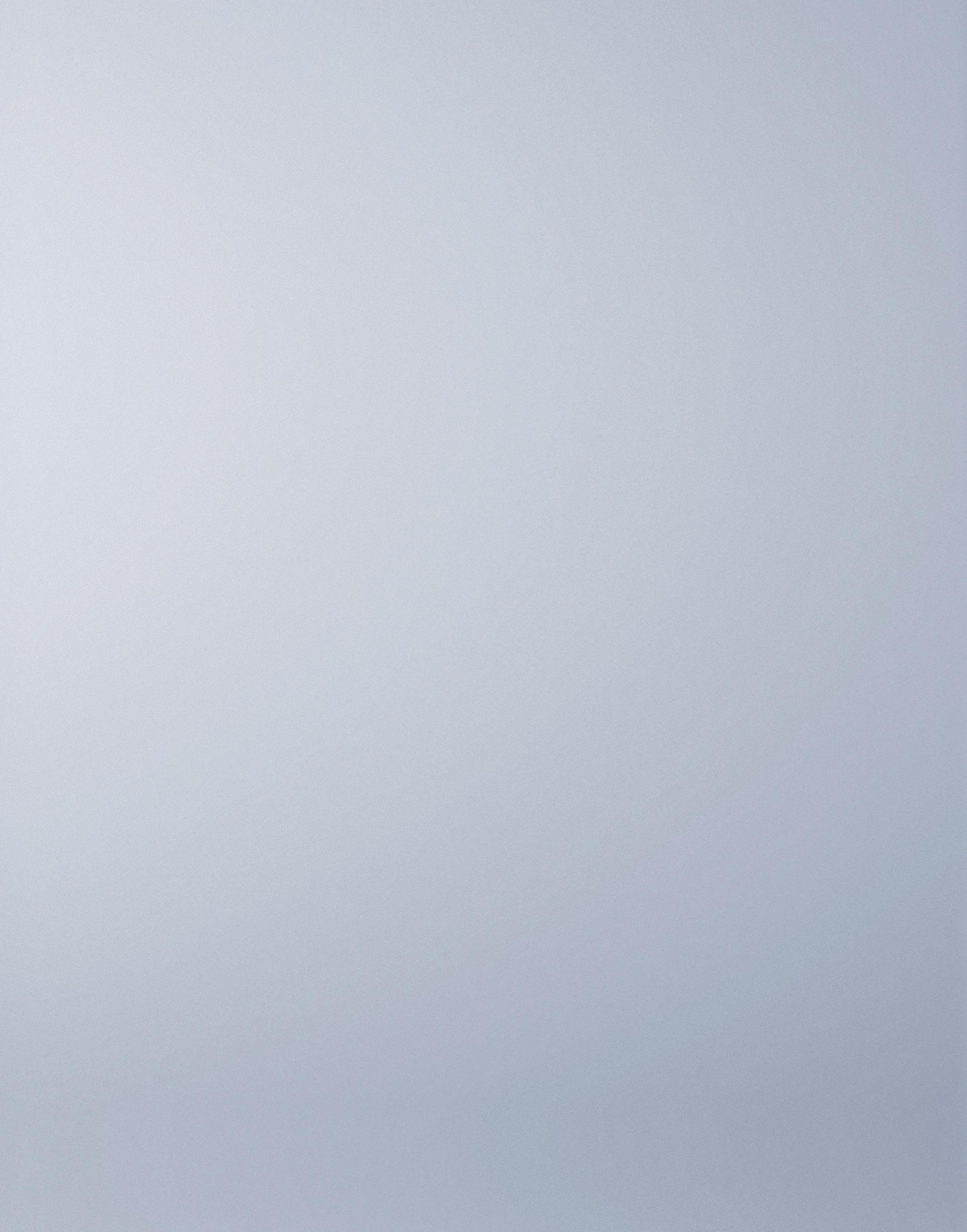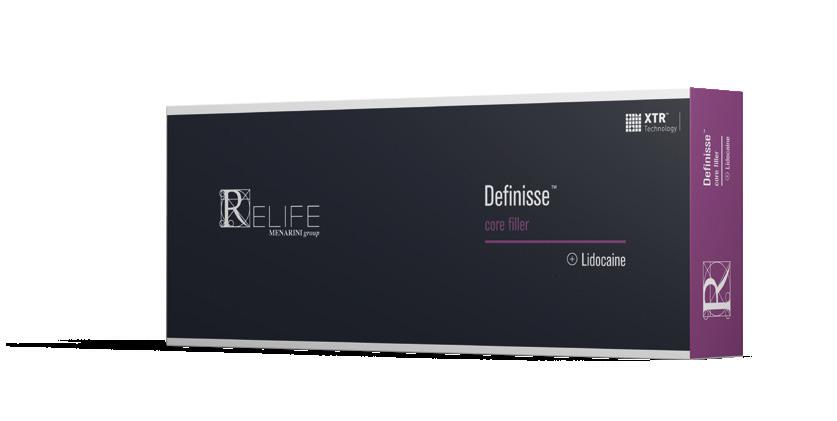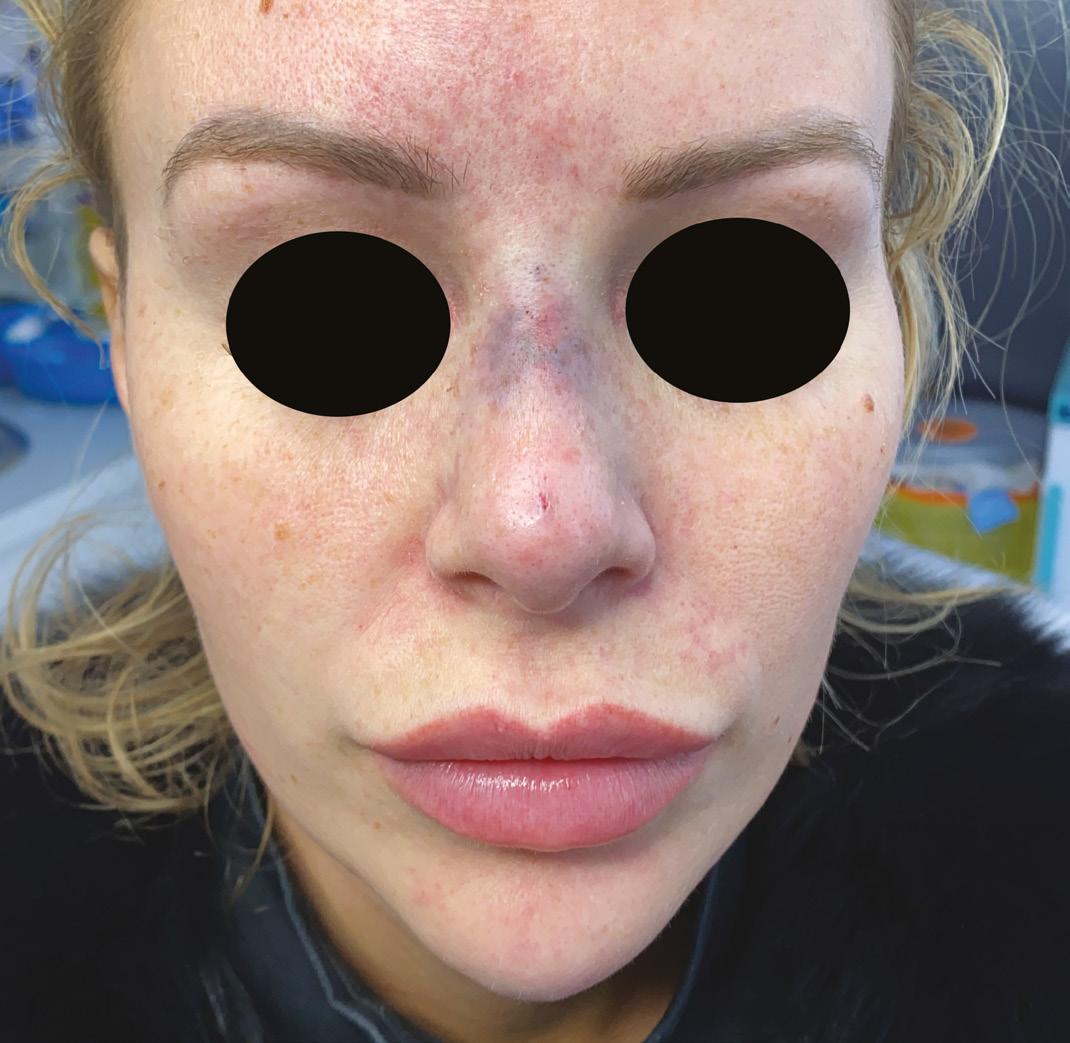
5 minute read
Abstracts
A summary of the latest clinical studies

Advertisement
Title: Oil Thickening with Organoclay Enhances the Ultraviolet Absorption Ability of Sunscreen Authors: Yamaguchi K, et al. Published: Journal of Oleo Science, April 2021 Keywords: Skin-Mimicking Substrate, Oil Thickener, Sunscreen Abstract: The performance of sunscreen products depends on their ultraviolet (UV) absorption ability through the film formed on the skin surface upon application. Therefore, it is important that a uniform film is formed on the uneven skin surface for effective sunscreen performance. Most UV filters are oil soluble; in this study the increasing viscosity of the oil phase of a sunscreen product can improve the performance of sunscreen. We examined the association between the concentration of the oil thickener and the UV absorption ability of the sunscreen product using a skin-mimicking substrate (SMS). Among all thickeners examined, organoclay and silica silylate increased the UV absorbance of sunscreen on the SMS in a concentration-dependent manner. Thereafter, we examined film uniformity to elucidate the mechanism underlying the observed increase in UV absorption. The uniformity of film thickness on the SMS increased with organoclay content. Our results showed that increasing the viscosity of the oil phase with organoclay resulted in the formation of a uniform film, thereby increasing UV absorbance. Thus, the use of thickeners, such as organoclay, increases the viscosity of the oil phase at a low shear rate after the high shear of application.
Title: Characteristics of Non-Ablative Resurfacing of Soft Tissues by Er:YAG Laser Pulse Irradiation Authors: Lukac M, et al. Published: Lasers in Surgery and Medicine, April 2021 Keywords: Er:YAG Laser, Non-Ablative Resurfacing, Rejuvenation Abstract: Several minimally invasive gynaecological, ENT and aesthetic procedures have been introduced based on delivering ‘smooth’ sequences of Er:YAG laser pulses to mucosal tissue at moderate cumulative fluences not below the ablation threshold but typically do not require local anaesthesia. The observed clinical results using ‘smooth-resurfacing’, has suggested that in addition to the direct heat injury to deeper-lying connective tissues, there is an additional mechanism based on indirect triggering of tissue regeneration. This study is to improve understanding of the complex dynamics of the exposure of tissues to a series of Er:YAG laser pulses, during which the thermal exposure times transition from short to long durations. A physical model of laser-tissue interaction was used to calculate the temperature evolution. Two modalities of non-ablative resurfacing were explored: a ‘sub-resurfacing’ modality with cumulative fluences, and the ‘smooth-resurfacing’ modality with fluences below the patient’s pain threshold. A skin tightening situation was explored by measuring pain tolerance threshold fluences for treatments on abdominal skin with and without topical anaesthesia. Two preferred smooth-resurfacing treatment modalities were identified. One using optimally long pulse sequence durations with optimal number of pulses. For deeper coagulation, long pulse sequences with delivered pulses are used with topical anaesthesia. Title: Factors Influencing the Unmet Effects of Alpha Hydroxy Acid Peels on Acne Vulgaris Authors: Tang J, et al. Published: Dermatologic Therapy, April 2021 Keywords: Acne Vulgaris, Chemexfoliation, Hydroxyl Acids Abstract: Alpha hydroxy acid (AHA) peels have been previously recommended as an option for patients with intolerance to first-line treatments especially for long-term use. The safety and efficacy of AHA peels for acne have been established, but factors influencing the effects are unknown. We recruited patients diagnosed with acne who were intolerant to or refused the first-line treatments and collected the medical and demographic information of patients treated with a full course of AHA peels; data collected included age, sex, treatment history, and efficacy after treatment. The efficacy score was defined by revised scales: 2 points indicated significant improvement, 1 point indicated mild improvement, and 0 point indicated no improvement. Additionally, only efficacy scores of 2 points were classified in the satisfactory group; the others were classified in the unmet effect group. A total of 141 patients (120 female, 21 male) were included. The patients in the satisfactory group were older and showed better compliance than the patients in the unmet effect group. Multiple analyses confirmed the effects of younger ages and poor compliance on the unmet effect. Unsatisfactory compliance and age might decrease the effects of AHA peels on acne.
Title: Clinical Experience of Poly-L-lactic Acid Injections For Body Contouring Treatment Authors: Shridharani S, et al. Published: Journal of Cosmetic Dermatology, April 2021 Keywords: Body Contouring, Biostimulator, Poly-L-lactic Acid Abstract: Clinical data on body contouring with injectable polyL-lactic acid are sparsely reported in published literature. This study describes the lead author’s clinical experience using injectable polyL-lactic acid for body contouring in various anatomic locations. 20 consecutive patients undergoing body contouring treatments with poly-L-lactic acid were prospectively followed. All treatments were performed at a single clinic. Treatment details such as reconstitution, injection volume and dosage were documented. Treatment response was assessed independently by patients and the treating physician. Twenty patients (85% women) received injectable poly-L-lactic acid for body contouring treatments such as buttocks volumization, cellulite, and skin quality treatment. In most patients (65%), polyL-lactic acid was administered to correct post-surgical soft tissue deformities. Overall, patients had a mean of 5.1 treatment sessions in a mean of 1.4 anatomic locations. The most treated anatomic locations were buttocks (58%), thighs (20%), and abdomen (9%). Most treatment sessions resulted in improvement of the treated area. Adverse events included bruising, edema, numbness, and tenderness. Nodule formation was recorded for one patient. According to the lead author’s clinical experience, poly-L-lactic acid injection is well tolerated and can achieve good aesthetic outcomes when used for body contouring in appropriate patients.


The beauty of the moment

Creative genius has long been part of our Florentine history, dating as far back as Michelangelo’s works of art. These values have inspired us to create RELIFE® – a growing portfolio of premium aesthetic medicine solutions built with innovative technology. See how our new Definisse™ range of peels, filler and threads, can transform your practice and your patients. Launching for the first time in the UK.
For more information, to register for training or place an order, ask today at: info@relifecompany.co.uk
A. MENARINI FARMACEUTICA INTERNAZIONALE SRL Menarini House, Mercury Park, Wycombe Lane, Wooburn Green, Buckinghamshire, HP10 0HH. Incorporated in Italy with Limited Liability | Branch registered in England No BR016024. Tel: 01628 856400 | Email: menarini@medinformation.co.uk

Filler SKUs CE0123 – CROMA-PHARMA GmbH, Industriezeile 6, 2100 Leobendorf, Austria Threads CE0373 Assut Europe SpA, Via G.Gregoraci, 12 00173 Roma, Italia Hydrobooster CE0459 CROMA GmbH, Industriezeile 6, 2100 Leobendorf, Austria Peel Program CE Mastelli S.r.l., Via Bussana Vecchia 32, 18038 Sanremo (IM)

Available now from Church Pharmacy: +44 (0)1509 380 046 www.churchpharmacy.co.uk










